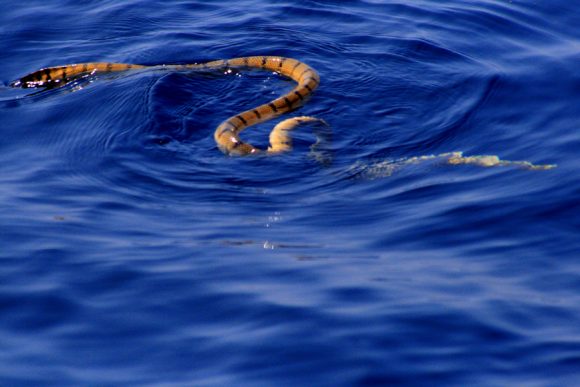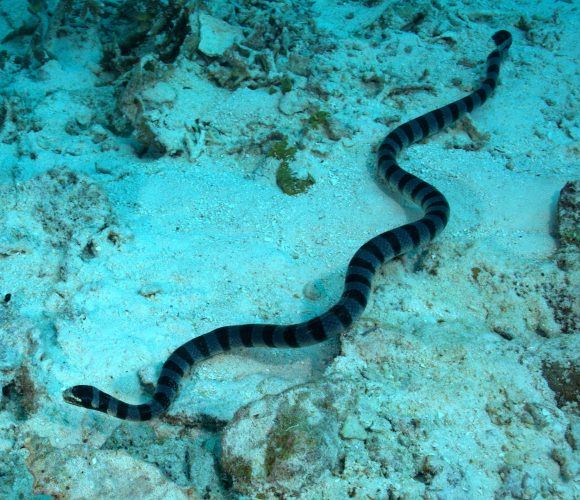It might not be surprising for you to know that human beings are actually destroying this planet. And with some consideration, it is pretty fair for the nature to revenge us. Yes, climate change and global warming, that we have caused to this planet, are apparently trying to kill us in so many ways.
However, despite many kinds of disasters caused by global warming and climate change, or in some extent we can say we have called for those ourselves, it seems like their most favorite way to eradicate human population is to envenom us.
If you think about air and water pollution, no it is not about that. Air pollution and water pollution have nothing to do with global warming. We are talking about how climate change and global warming are literally trying to kill us using venomous and or poisonous living organisms.
In one of our articles, we have shown you a rather unique way of how it works by growing a toxic plant. While this time, the venomous terror comes from the ocean. What does it mean, and how it happens? In this article, we will explain it to you.
Bites And Stings

Experts from marine sciences at the University of California, Davis, have conducted many kinds of researches to understand better the impacts of climate change. There are many things they have covered and discovered, but there is something particularly interesting that they pointed out.
The population of amphibious toxic frogs is declining rapidly in this condition due to changes in stability of environments they are living in. However, something different happens to poisonous and venomous creatures living in the sea. While the frogs are giving in the changes, the sea creatures choose to survive a little bit longer.
According to their latest study, poisonous and venomous sea creatures are becoming ‘increasingly common’ to many corners of this planet. It means that in areas where they couldn’t be found before, those poisonous and venomous sea creatures are finding new homes.
Some of the species mentioned in the study are lionfish, sea snakes, crown-of-thorns starfish and different types of venomous jellyfish. Some of them are highly venomous and might give fatal results to human.
“These species have human interest because they’re poisonous but they reflect the broader patterns that we’re seeing: range shifts, abundance changes, either declines or increases, and that is upsetting the balance of what we would normally see in the ecosystem,” said Isabelle Neylan, co-author of the study.
Jellyfish

Among the creatures that are moving out of their homes, there is an animal that researches are paying close attention to. There are two species of jellyfish, box jellyfish and irukandji, which already marked as deadly in many places in the world, especially Australia.
“Box jellyfish are very venomous—possibly the most venomous in the world pound-for-pound,” said Timothy Erickson, toxicologist at Brigham and Women ’s Hospital and Harvard Medical School who contributed to the study, to National Geographic.
While Jennifer Purcell from Western Washington University backs up the statement by saying that jellyfish might be the biggest problem in the table. The problem is, in warmer water jellyfish tend to reproduce better.
“It’s not just a couple species, it’s really the majority of jellyfish that have been looked at which increase their abundance,” said Purcell, who has studied the spread of jellyfish for years. “The jellyfish is maybe their strongest case but I do worry that they picked out some sensational species to try to make an important sounding story,” she continued.
What Happened?

Knowing the fact that those creatures are now going to places they have never been to, there must be a reason for that exodus. As we said before, the reason is highly linked with global warming and climate change that happens nowadays.
As sea water is getting warmer and warmer day by day, there is enough reason for the creatures to feel uncomfortable. In this case, since the warming of sea water is global, areas where the water used to be too cold for the creatures are becoming ‘pretty comfortable’ for them.
The creatures that usually live near equator are now swimming more northward and southward to seek for colder waters. So, don’t be too surprised if someday near you find a group of jellyfish you have never seen before are swimming at the beach you visit.
The problem with this mega-migration is that coast guards and visitors should be aware of those venomous creatures. “These phenomena, along with increases in human populations and coastal development will likely increase human−animal encounters,” as stated in the study.
Researchers could found the fact that they are moving but still can’t find the migration pattern. “The big pattern is that there isn’t necessarily a pattern,” said Neylan. She said that each species might, and should, have different migration pattern depending on unique challenges they face and requirements they need.
Boom And Gone

While the fact that the venomous creatures are moving out their homes indicates a terror for beach visitors, that’s not the only problem here. We are not the only ones being threatened by this migrating creatures.
The creatures themselves are also under a threat, since moving to a new place is not an easy thing to do in animal kingdom. Some of those species of venomous creatures are predicted to not be able to cope with the range shifts.
There are three options possible, the first is those creatures will be okay and settle in their new homes without causing or having any problems. While the second is that upon or before reaching their new homes, they get eliminated by harsh environment or bigger and stronger predators.
While the third one is pretty complex, yet most likely to happen. Since the venomous creatures are deadly, their presence can pose threat to native species inhabiting their new homes. If the creatures cannot introduce themselves properly, their venom can easily kill innocent predators.
We know that the absence of predator is highly linked with population boom, and indeed this is the thing that may happen. If the population boom really happens, then the stability of the environment will be messed, resulting in further destruction in environment.
Now, the question that we should ask to ourselves is: can we fix it before anything bad happens to the ocean ecosystem?
Sources:
https://www.nationalgeographic.com/
https://www.sciencedirect.com/



Leave a Reply